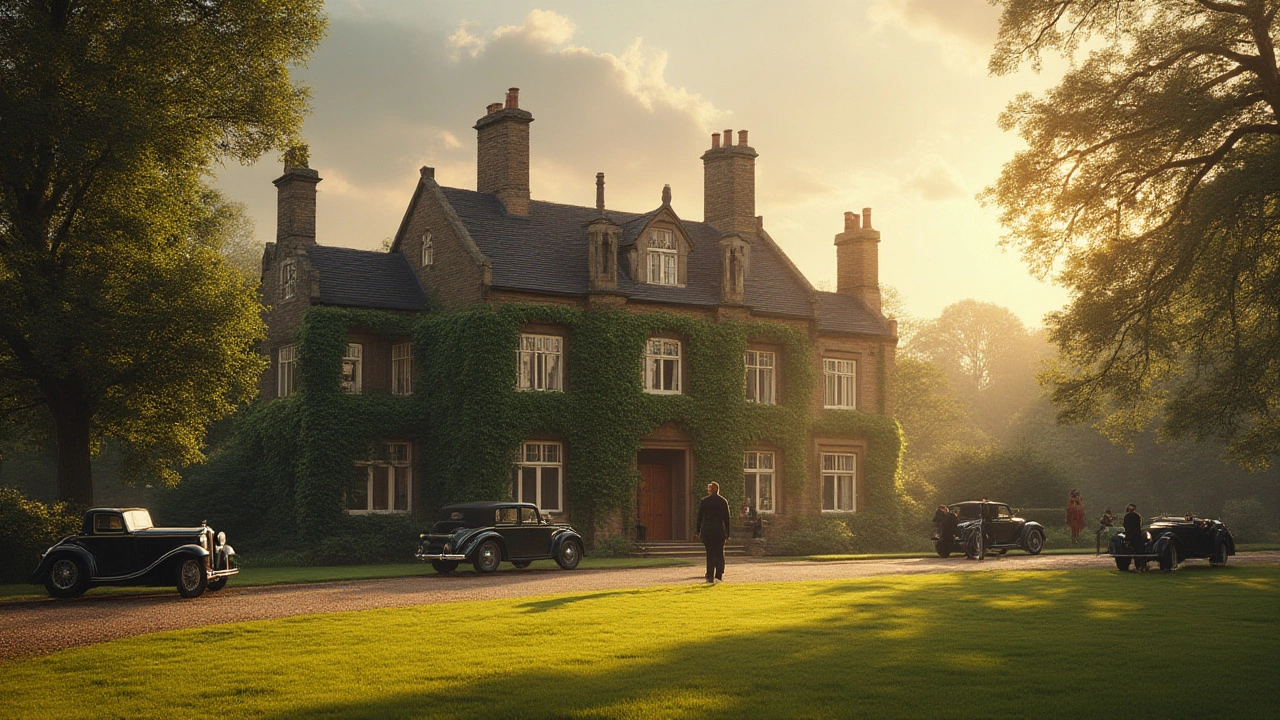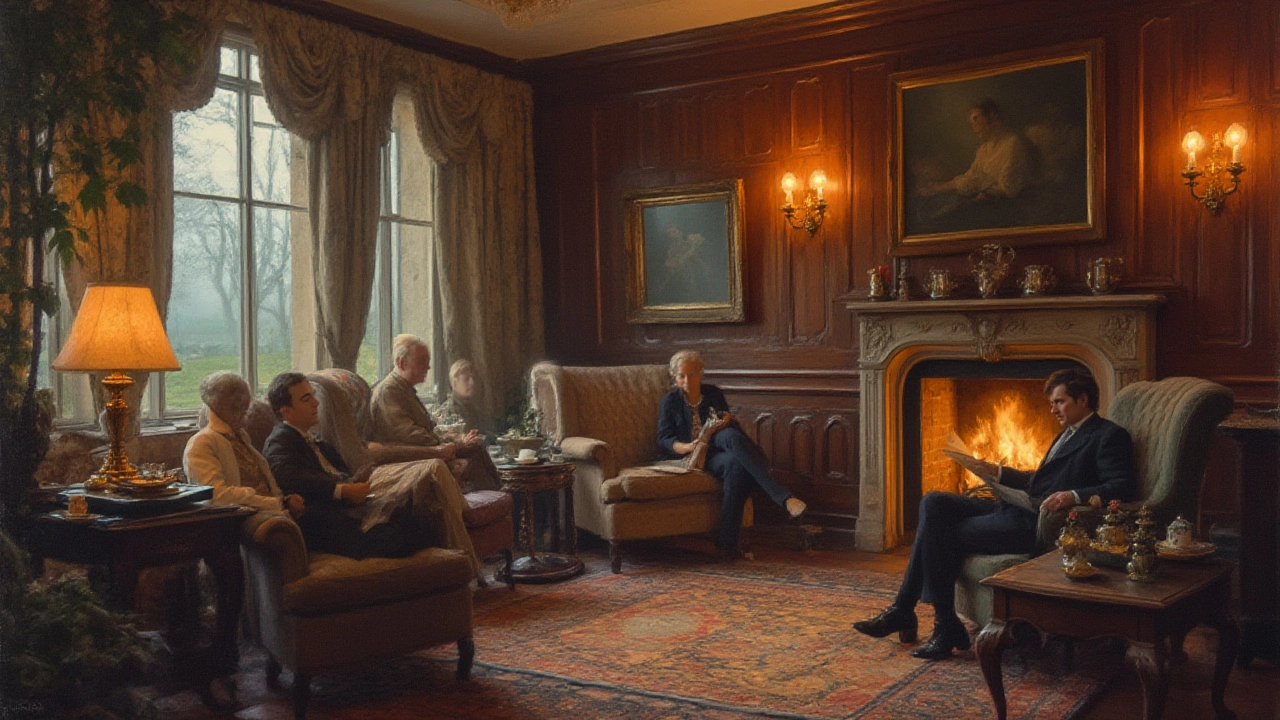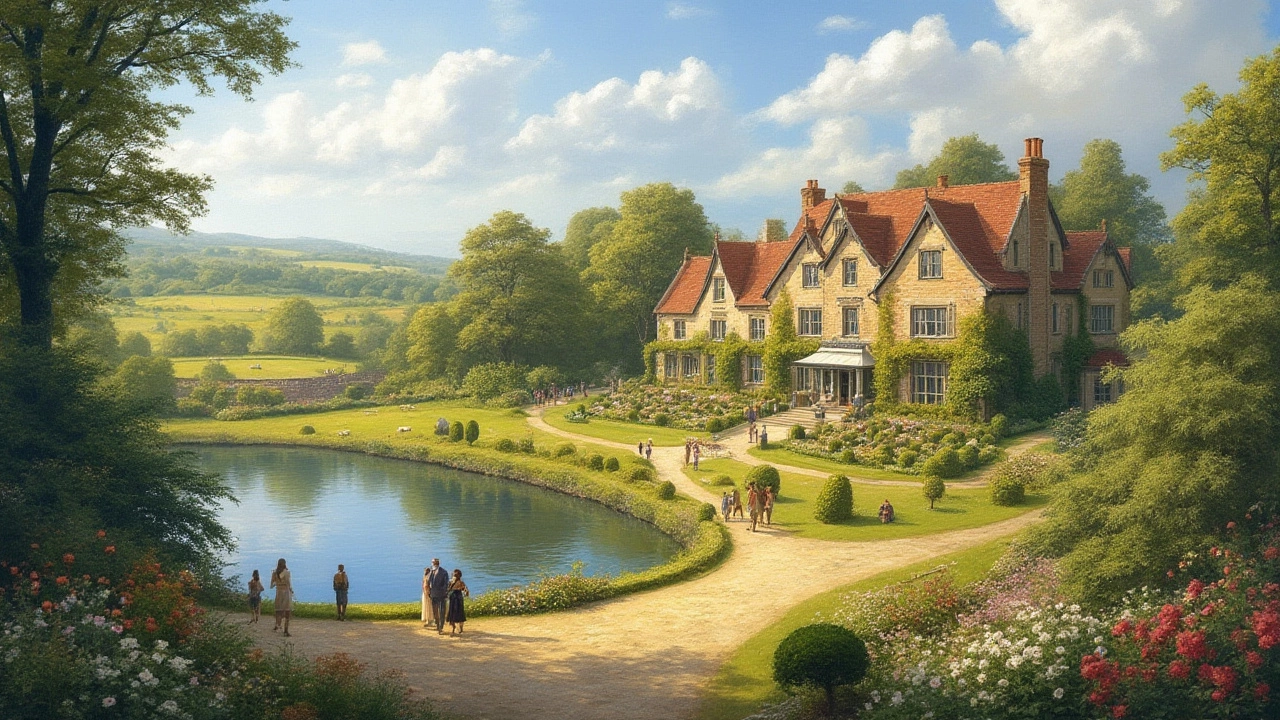Discovering the First Country House Hotel: The Origins of Modern Rural Luxury

Country house hotels are now a classic part of a British escape—think sprawling gardens, elegant lounges, long breakfast feasts, and the hush of ancient trees. But rewind a hundred years, and the world’s first country house hotel didn’t exist. It’s wild to imagine: holiday hideaways in grand old mansions simply weren’t a thing. So where did this beloved tradition start? The answer lies tangled in English history, a pinch of 1940s ingenuity, and a golden ticket for travelers who craved the pleasures of the countryside without owning a manor. The story isn’t only about hospitality—it’s a slice of social change and clever business.
What Exactly is a Country House Hotel?
Picture a stately manor perched amid rolling hills. There’s a gravel driveway, sheep dotting distant fields, and an air of gentility you can almost taste. But instead of stuffy rules or a ‘Downton Abbey’ vibe, a country house hotel is a welcoming retreat. The difference between an ordinary hotel and this style of lodging is all about setting and atmosphere. Country house hotels started as private homes, usually belonging to gentry or aristocrats who once held huge house parties and lavish shooting weekends. When fortunes changed, these estates needed to pay their own way. Some became boarding schools or hospitals, while a lucky few opened their grand doors to paying guests.
The format is distinct: instead of corridors lined with identical rooms, you get suites named for blooms or past residents, afternoon tea by a well-stoked fire, and gardens designed by figures like Capability Brown. Staff treat you like a friend visiting for the weekend, not just a number on a reservation list. There’s often local food, history in every floorboard, and that rare feeling of truly escaping your busy world. These hotels are smaller than most chains. Privacy and a sense of belonging matter far more than impressing you with modern gadgetry. It’s a throwback, but one that feels personal—the antithesis of bland, businesslike stays.
Modern country house hotels tend to offer luxurious extras: wellness spas, tennis courts, wine cellars, perhaps a croquet lawn or a kitchen garden. Yet, at their heart, they are about comfort, tradition, and the English countryside’s quiet rhythms. If you've ever relaxed in a deep armchair with tea while Nimbus, my not-so-little Maine Coon, insists on supervising your scone selection, you get the picture. But none of this would exist without someone willing to experiment with converting private elegance into shared hospitality.
The Birthplace: Stapleford Park and the Wartime Pivot
If you dig into memoirs and hotel folklore, a handful of names float to the top as contenders for the title of the “first country house hotel.” But among them, Stapleford Park in Leicestershire stands out with the clearest claim. The transformation happened in the aftermath of World War II, when the estate, a 17th-century beauty set in sprawling parkland, needed a purpose. The war had drained country houses of their fortunes, sapped the labor force, and made it tough to keep up the appearance of old money.
In 1946, Lady Gretton, owner of Stapleford Park, decided to take a radical step and open the doors of her family estate to paying guests. She was hardly the first to host visitors, but she was the first to do so on a hotel scale—advertising stays, offering meals, and providing country comforts to city dwellers hungry for greenery and fresh eggs. In this moment, the humble beginnings of the country house hotel were born. Her decision whispered through the upper class, quietly sparking a trend that would later sweep across Britain.
There were plenty of skeptics. Why would anyone pay to live like the gentry without actually being the gentry? Yet, Lady Gretton’s gamble paid off. Visitors loved basking in luxury with none of the headaches of estate ownership. They’d wake up to birdsong, spend afternoons strolling manicured grounds, and dine on locally sourced food. Not bad, considering in postwar Britain, even tea was still sometimes rationed. The model spread quickly—other landowners itching to save their crumbling piles took note, and soon the Midlands and southern counties were sprinkled with converted stately homes offering idyllic escapes.

From Aristocratic Homes to Boutique Getaways
Once the dam burst with Stapleford Park, others followed. Hotels such as Bailiffscourt in Sussex and Lucknam Park in Wiltshire added their mark. Their secret sauce was authenticity: original oak beams, antique four-posters, walled gardens, and echoes of past centuries. What’s fascinating is how these venues balanced the line between keeping their aristocratic flair and making things comfortable (and practical) for guests unused to cold, drafty rooms or slightly eccentric plumbing.
This new chapter in hospitality wasn’t just about opening up space—it was about reimagining luxury. Rather than a ballroom packed with local dignitaries, the Sunday roast became a ritual for city folk in search of stress relief. Country house hotels doubled down on activities: think riding horses along bridleways, foraging with a local guide, or enjoying wine tastings in a cellar that once sheltered Victorian guests from the rain.
By the late twentieth century, these rural retreats had become sought-after wedding venues and serious culinary destinations. Some even hired star chefs, transforming creaky dining rooms into Michelin-starred havens where homegrown turnips and garden mint featured as proudly as truffle butter. Today, many have their own bee hives, kitchen gardens, or woodland trails (side tip: always ask about garden tours for a behind-the-scenes peek). The shift mirrored the public’s growing hunger for experiences that offered tangible links to the past but wrapped in present-day comfort. Guests didn’t want to be tourists—they wanted to belong, even if just for one long weekend.
Why the First Country House Hotel Matters Now
Knowing the origins of the first country house hotel isn’t just trivia. It shines a light on how British culture adapted to new social realities, reshaping relics of the aristocratic age into something everyone could enjoy. Many of these places survived precisely because they welcomed paying guests. If Lady Gretton hadn’t opened Stapleford Park and others followed, countless great houses might have faded into ruin or been lost to history. Instead, these properties thrived, their stories updated with each passing guest.
Travelers today might not know they owe their Sunday afternoon scone to a clever postwar landowner, but they reap the rewards just the same. That desire for slow-living and a brush with a gentler pace didn’t disappear. If anything, it's become even more precious. Modern stresses make us crave these quiet corners, where Wi-Fi signals flicker and foxgloves nod in the wind. Plus, country house hotels have upped their game: it’s now normal to see wellness spas, yoga retreats, bird-watching weekends, or even wild swimming on the menu right next to billiards and the traditional g&t.
Here’s a tip: if you want to spot a true original, check for hotels that have retained family links or quirky traditions—the kind that offers black pudding for breakfast or still serves high tea at four. Names like Gravetye Manor and Hartwell House carry decades of hospitality traditions and might not even mention their grand beginnings outright. The essence is still there, though. Guests feel a part of an ever-unfolding story, rather than outsiders peering in.

How to Choose Your Perfect Country House Stay Today
If you feel inspired by the roots of the first country house hotel and want to plan an escape, choosing the right spot can be overwhelming. The key is knowing what you adore most. Is it Edwardian romance? Eco-friendly kitchens? Historic gardens? Or do you just want a roaring fire and a good book (plus a lingering breakfast)? Start by looking for independent properties with long histories. Many still have their own family legends, original artwork, and guestbooks filled with stories from decades past.
One cool trick is to ask about guided property tours—many country house hotels are proud of their backgrounds and will share tales of royal visits, architectural oddities, or the odd ghostly rumor for good measure. Another tip: go off-season or midweek for the best chance at peace and staff willing to chat about their favorite local walks or dishes. If suites are named for ancestral owners or local wildflowers instead of just ‘Room 4’, you’re likely in for the real thing.
It’s worth remembering that not all country house hotels are old—some have only recently been converted, but the heart of the experience remains: comfort, hospitality, and immersion in the joys of the landscape. Snuggle up in drawing rooms lined with books, sip tea in a sunlit conservatory, or play a round of croquet with views stretching for miles. You might spot a Maine Coon curled on a windowsill (Nimbus’s spiritual kin), or catch the gardener tying up peonies outside the library. It’s the everyday rhythms that make a stay memorable—something no chain hotel can copy.
If you’re searching for relaxation and a spark of history, follow the footsteps of that first brave estate owner. Swap busy cities for the countryside, and discover why the country house hotel is still the ultimate rural escape.